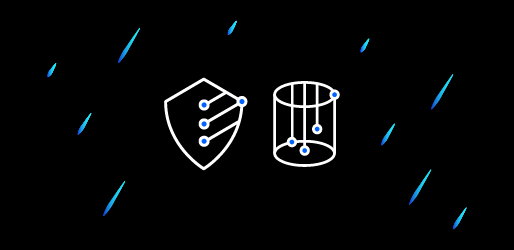Hurricane season is here, and the US is already facing its seventh hurricane this season.
No matter how severe, hurricanes and other disasters are a concern for both individuals and businesses who operate in these areas. For businesses, such disasters can severely threaten their reputation, revenue, and competitiveness.
Take Hurricane Sandy, which impacted hundreds of companies. Data recovery firms worked for weeks to try to restore data lost in the storm. As data becomes increasingly critical to business operations, an effective disaster recovery plan for data is key to reducing the negative impact of catastrophic events. The risks of not doing this are massive and the stakes are high.
What should companies think about when evaluating their disaster recovery options? Here are three top concerns:
 Disasters can affect the availability of mission critical-data on servers in the same location. Businesses should store their data in multiple locations to reduce the chance of losing it forever.
Disasters can affect the availability of mission critical-data on servers in the same location. Businesses should store their data in multiple locations to reduce the chance of losing it forever.
For example, a company headquartered in Miami may have servers located in their office building, but also have off-site servers at data centers in Los Angeles and Houston. If a hurricane hit Miami, destroying all their servers, critical business applications could continue to run by being rerouted to the LA or Houston servers.
A wide range of disaster recovery capabilities exist. How do you choose just one? The continuous availability of data is a good differentiator to use for limiting the options.
Businesses should ask themselves, how quickly the backup must be made available to applications? How much data can they afford to lose? These questions are key in determining the optimal data backup plan.
In traditional backups, if your backup plan is to have a scheduled backup at 6 AM and 6 PM every day, if a failure occurred at 5 PM, all the data that changed between 6 AM and 5 PM would be lost. Today, there are technologies that provide continuous replication, which allow for near-zero data loss and recovery time in the event of a failure.
How much data a business has today and how fast that data is growing can potentially result in a very expensive IT bill. These costs include system administrators, software licenses, on-premises or cloud storage, networking, security, and more. This is no small investment, but compared to the cost of losing data or having to pause business operations and applications, this price tag makes more sense. Nevertheless, any potential to seize cost savings opportunities is worth consideration in this area.
This is where IBM Big Replicate comes in. It is the only replication technology for Hadoop on the market today, which ensures data is continuously available regardless of geographic location, data platform architecture, or cloud provider. Big Replicate removes the risks and complexity of traditional data movement by enabling continuous replication with zero business disruption caused by the limitations of one-way, batch-oriented tools.
Big Replicate defines a new standard for data consistency and removes risk in the management of data movement. Put all of your data to work for your company at every moment.
